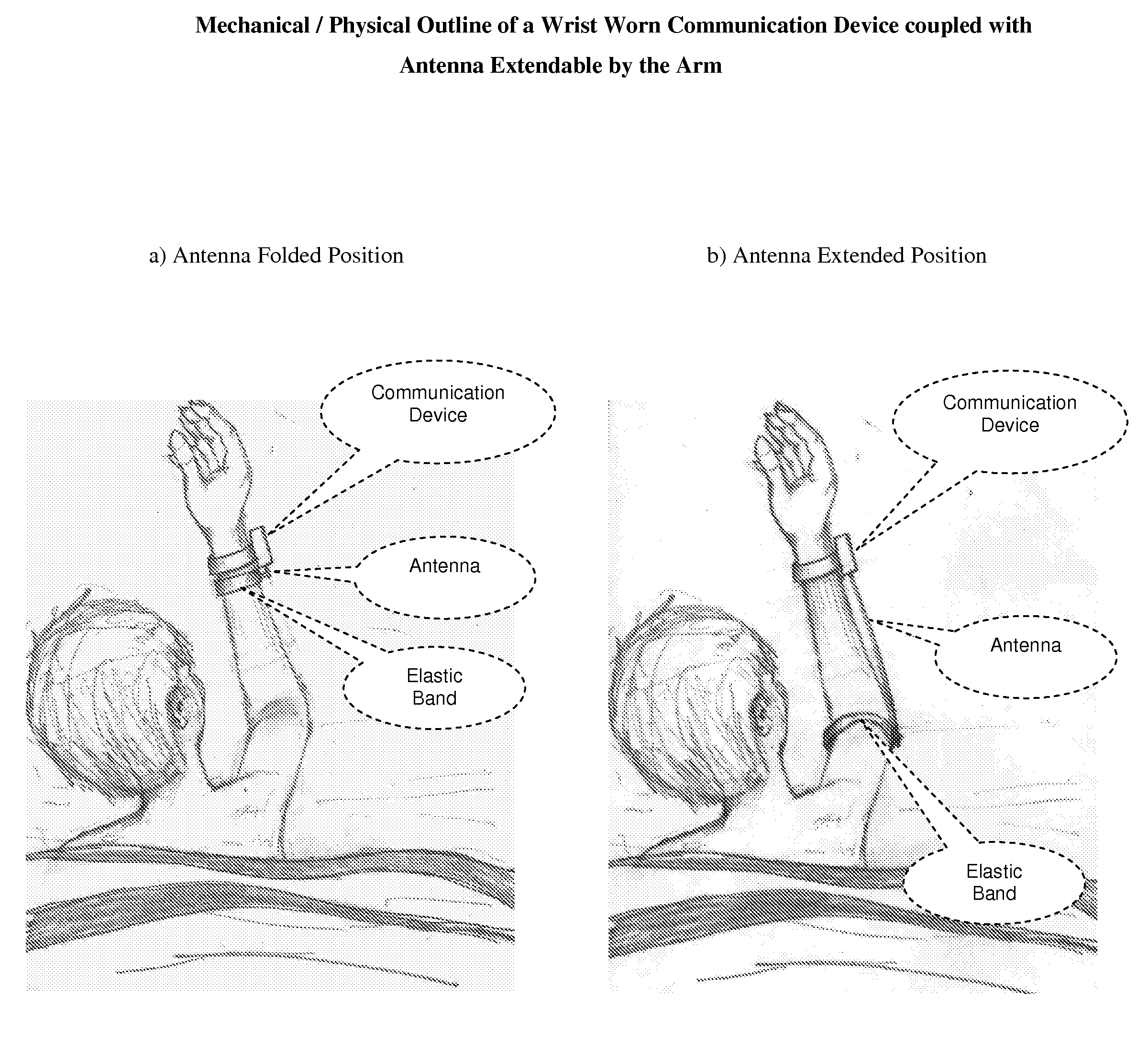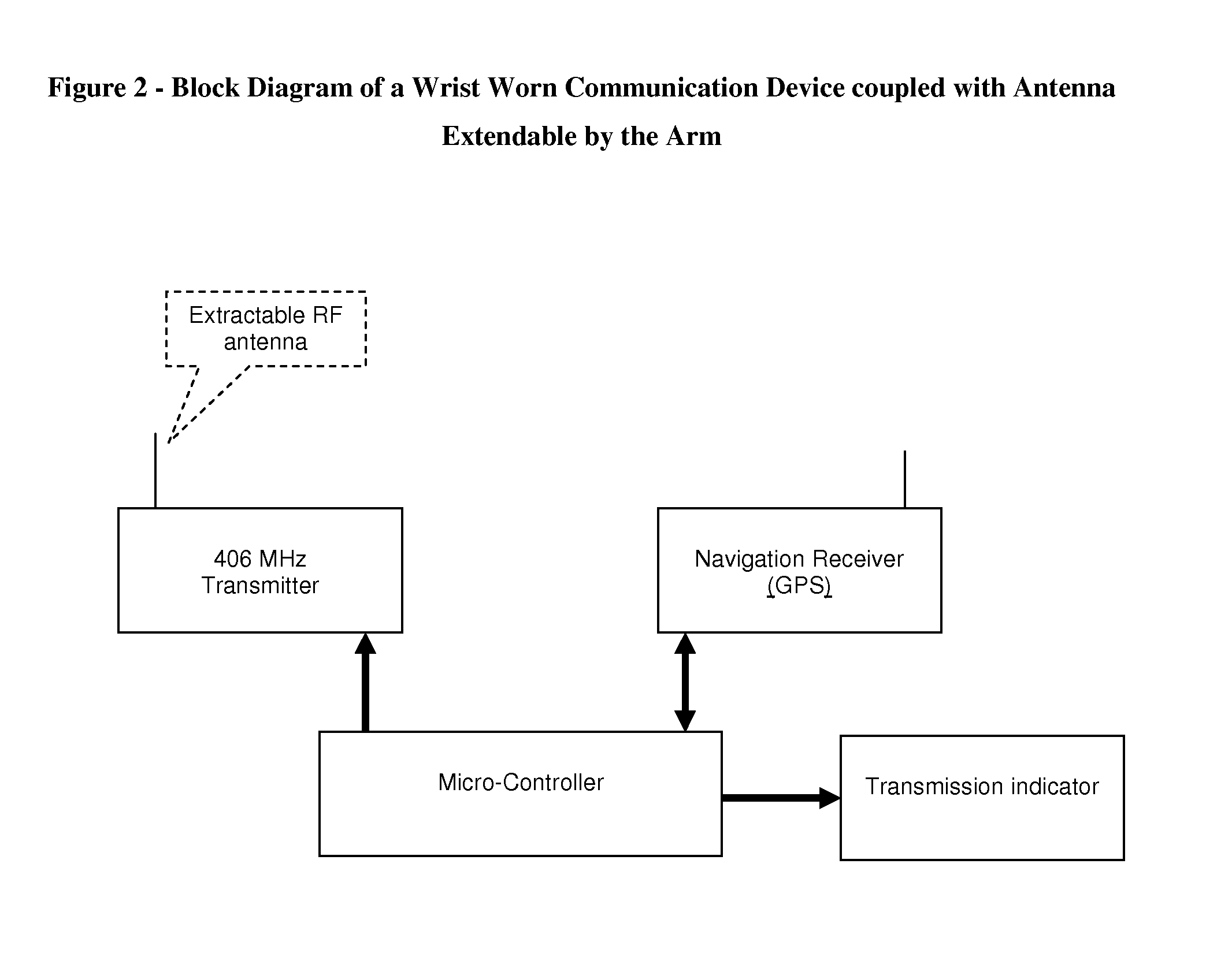Wrist Worn Communication Device coupled with Antenna Extendable by the Arm
- Summary
- Abstract
- Description
- Claims
- Application Information
AI Technical Summary
Benefits of technology
Problems solved by technology
Method used
Image
Examples
Embodiment Construction
[0048]The present invention discloses a device and a method for a wrist-worn wireless communication device coupled with an RF antenna, said antenna configured to operate folded or coiled in said wrist-worn device, or extended along the arm from wrist to elbow, wherein said antenna is made of a flexible electrical conductor and is provided with means for been attached along the arm or by the elbow, comprised of:
a) A wrist-worn housing;
b) At least one of the following, in said housing: i) an RF transmitter; ii) an RF receiver;
c) An RF antenna, coupled to said RF transmitter and / or RF receiver, said antenna configured to be placed at least in the following positions: i) folded or coiled in said housing; ii) extracted from said housing and attached along the arm and / or by the elbow.
d) Means to attach the extracted antenna along the arm or by the elbow.
[0049]In a preferred embodiment, said wireless communication device comprises also:
e) A micro controller, configured to activate the tran...
PUM
 Login to View More
Login to View More Abstract
Description
Claims
Application Information
 Login to View More
Login to View More - R&D
- Intellectual Property
- Life Sciences
- Materials
- Tech Scout
- Unparalleled Data Quality
- Higher Quality Content
- 60% Fewer Hallucinations
Browse by: Latest US Patents, China's latest patents, Technical Efficacy Thesaurus, Application Domain, Technology Topic, Popular Technical Reports.
© 2025 PatSnap. All rights reserved.Legal|Privacy policy|Modern Slavery Act Transparency Statement|Sitemap|About US| Contact US: help@patsnap.com



